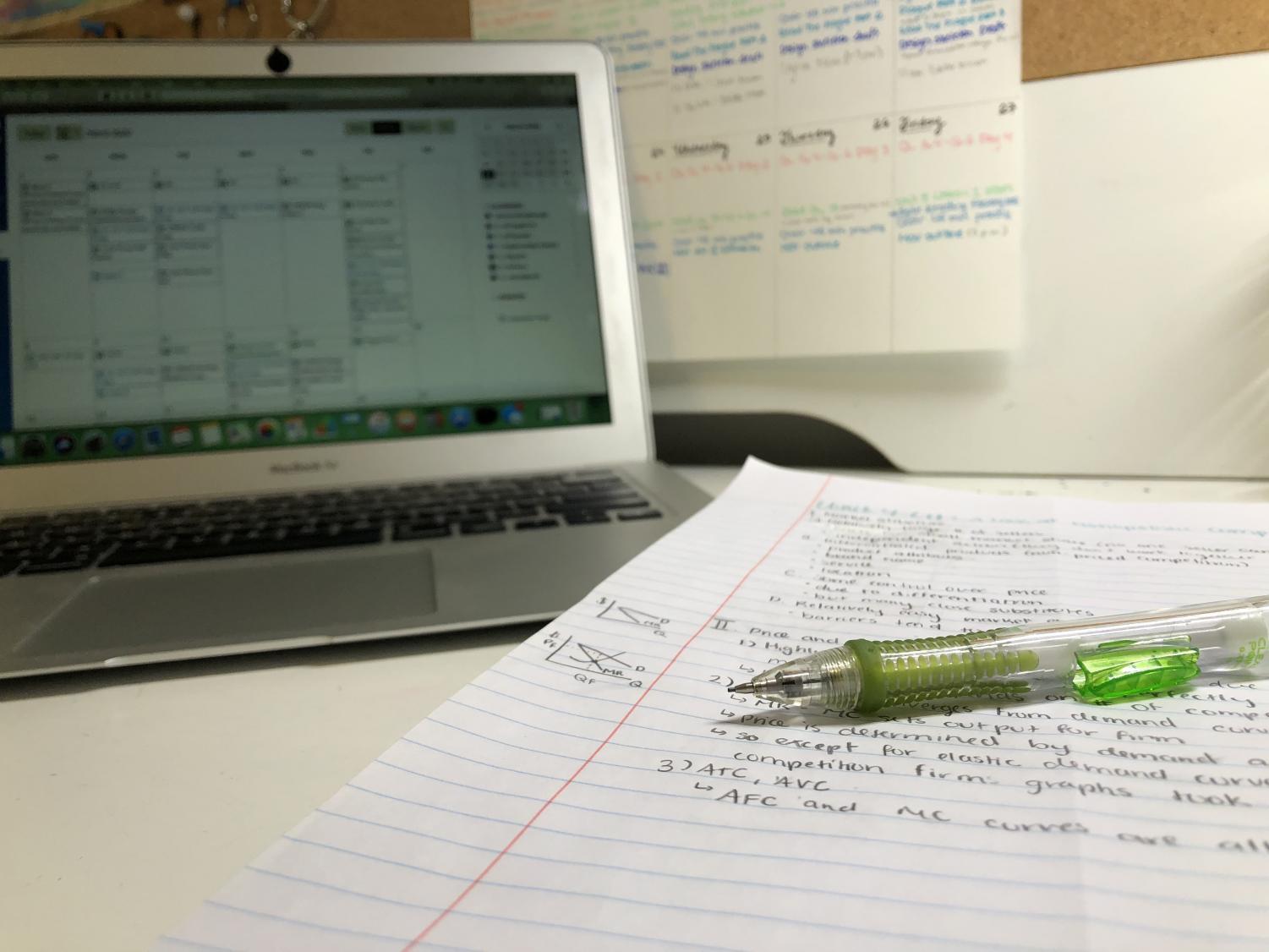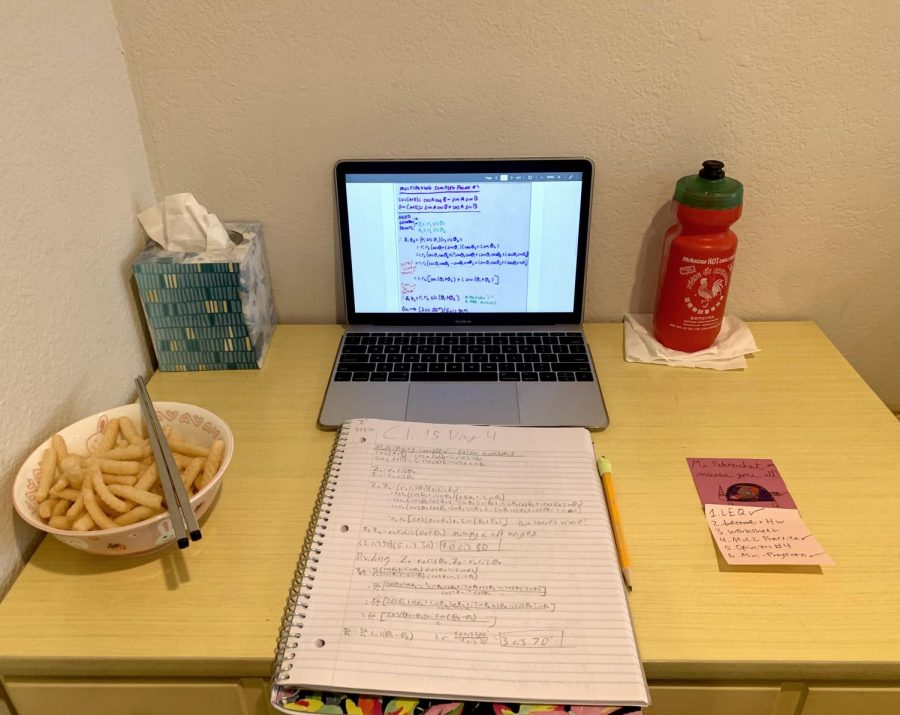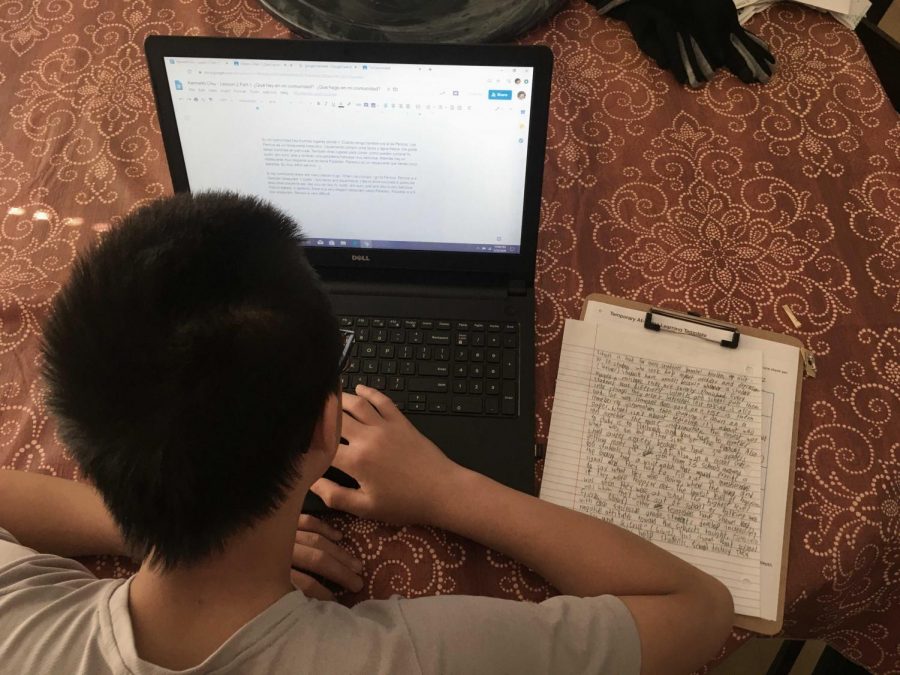Although the transition from on-campus to at-home learning has been difficult for many, there are also many positive aspects of the new system.
Opinion: Social distancing is not that bad
A couple of months ago, I predicted that 2020 would be a good year.
Of course, this was before the coronavirus (COVID-19) scared the world into canceling important traditions and closing school campuses.
When San Mateo County issued a “shelter in place” order, I became a pessimist, worried that social distancing would mess up education and ruin my life.
However, after a few days inside, I have realized that life at a social distance is not that different from ordinary life. The only difference is that I can’t go anywhere unless it’s essential.
If anything, staying inside is a benefit. I get to spend more time with my family, and I don’t have to see people I don’t want to see. And besides, it’s not like I have a reason to venture outside anyway; almost everything has been canceled.
A Daily Schedule at a Social Distance by Elise Hsu
If anything, social distancing has helped me be more productive. This is because distance learning allows me to set my own schedule.
In the past, I had to attend all my classes in order; now, I get to prioritize my tasks. I also set my own sleeping schedule and take my breaks whenever I want. My new schedule includes time to keep up on my hobbies and chat with my friends as well.
My primary complaint about social distancing was that it would prohibit me from seeing my friends. Thanks to resources like Zoom, this was not the case. Every day, I schedule meetings with my classmates to talk about classwork or to check in. Of course, nothing beats meeting up in person, but video calls are a temporary fix.
Another benefit to distance learning is that it made everyone brush up on their technology skills. Sheltering in place forced teachers to move their curricula to Canvas and communicate with their students.
Thanks to their work, almost every resource is now available online. Students can now learn at their own pace as opposed to being stuck with the group. This gift will keep on giving past this year, as it will be there for students who miss school.
Perhaps the only downside of social distancing is that every day seems the same. However, each day will bring new challenges and accomplishments, so use your time inside to overcome them. Staying inside every day for three weeks will feel strange, but it is essential to slow the spread of COVID-19.
Remember: COVID-19 is only out of your hands if you don’t wash them.
Editorial: Don’t hate on distance learning
From March 16 to March 27, students will be engaging in distance learning. On April 3, families will be notified as to whether school will continue through distance learning or not.
It’s March 16, the Monday after Carlmont’s administration announced that its campus would be closed and that school will continue through distance learning.
Students wake up at around 10 a.m., smiling since they didn’t have to get up early to go to school. They spend the next hour or so scrolling through Instagram and TikTok on their phones.
At 11:30 a.m., they roll out of bed to get some food. Then, it suddenly occurs to them that they may have some schoolwork to do.
So, at noon, they finally hop on their computer only to see loads of emails and notifications from their teachers. As they check Canvas, they’re shocked to see that every single one of their classes assigned them work, all due by the end of the week.
This is what happened to many Carlmont students last week. By now, they’ve already spent a week adjusting to distance learning, and many feel strongly about it.
Distance learning for Carlmont is taking place on Canvas, a learning platform that Carlmont teachers use to input grades. Students are already pretty familiar with Canvas, as many of their classes require that they turn in assignments or take assessments through Canvas.
First, we want to get out of the way that schools really had no option other than transitioning to distance learning. With the increasing number of COVID-19 cases in California, it has become imperative that schools shut down and remain closed.
But if schools decided to have a break during this time, students and teachers would be two weeks behind after spring break. This is especially problematic because none of us really know if we’re ever going to get back on campus.
California Gov. Gavin Newsom stated last week that he believes schools won’t open until summer break. So, if we just stopped all academic curricula, who knows how long students will be on break. In the end, learning must go on.
With the shift to distance learning, teachers had to spend a good amount of time converting all of their lessons to be online and accessible to students. For the first week of distance learning, students seemed to be overwhelmed.
As expected, many complained about the amount of work they are getting. They found themselves working the entire day with barely any leisure time. But this is how online learning should go.
Since students are staying home, many are tricked into thinking that this is a time for a break. But it isn’t. School is still going on, and students must keep on learning.
The assignments that teachers are giving are designed to be like an actual school day. And on a typical school day, students are in school from 8:57 a.m. — or 8 a.m. if they have a zero period — to 3:15 p.m. Additionally, they usually have homework on school nights as well, at an average of 3.5 hours per night.
So, spending a significant amount of time on schoolwork isn’t exactly different from an average day at school. At the end of the day, teachers are still teaching, and students should be doing assignments.
However, it’s also important not to dismiss the fact that distance learning can be difficult. Without face-to-face interaction, students may have a hard time grasping concepts and completing their work on their own. According to Ashton College, it’s harder to communicate efficiently and to be productive without meeting in person. To combat this, teachers are using Zoom.
Zoom is a remote conferencing service that can be used to hold online meetings and teachers have decided to use this tool for lectures and to interact with the students. But, as usual, there’s a problem with this.
Many students find it bothersome when their teachers require them to join a Zoom meeting at a particular time, and it’s easy to see why. It seems like teachers are butting in on their time, and they would rather not spend their days listening to their teacher’s lectures.
But how is this any different from a typical class period during regular school hours? If we were in school, students would have to get to class on time and follow the teacher’s lesson plan during that period.
The only problem with Zoom meetings is that some classes may overlap, but this usually doesn’t happen, for not all classes use Zoom. And, if it does happen, students should speak to their teacher about the issue, and their teacher will help find a solution.
Besides the workload, students are also upset about many other things in regards to distance learning. One common misconception that angers students is that teachers aren’t doing enough work; however, students have to remember that teachers have to regularly update their lessons and find new, online resources for their students. Also, many teachers hold office hours to help confused students.
If you’re still convinced that distance learning is the worst thing to ever happen, take a look at how you are spending your weekdays. Do you procrastinate on your assignments and find yourself rushing to turn them in on time? Or maybe you’re getting zeroes on your homework because you never did it in the first place.
In other words, this is a great opportunity for students to learn how to manage their time. In college, professors aren’t going to hold your hand and tell you when to do your work; you might as well learn how to be productive on your own now.
So remember that this time isn’t for relaxing or lounging; it’s a time for learning.
*This editorial reflects the views of the Scot Scoop editorial board and was written by Samantha Chu.



